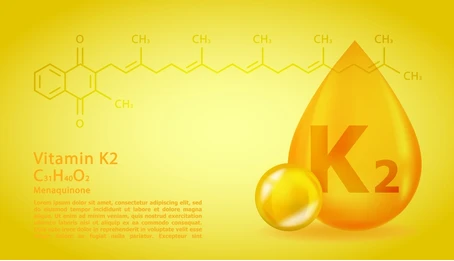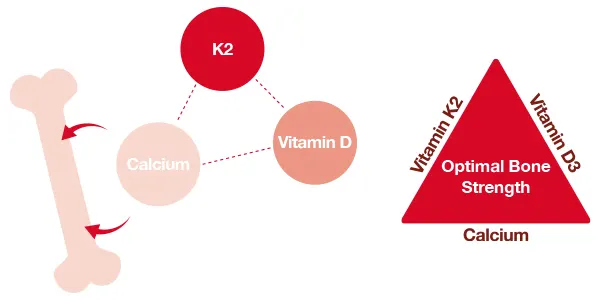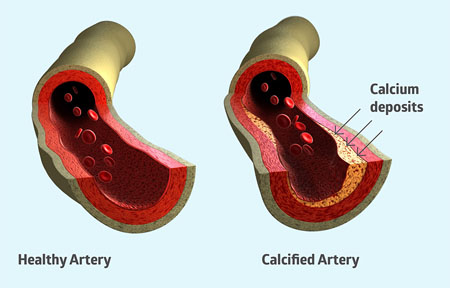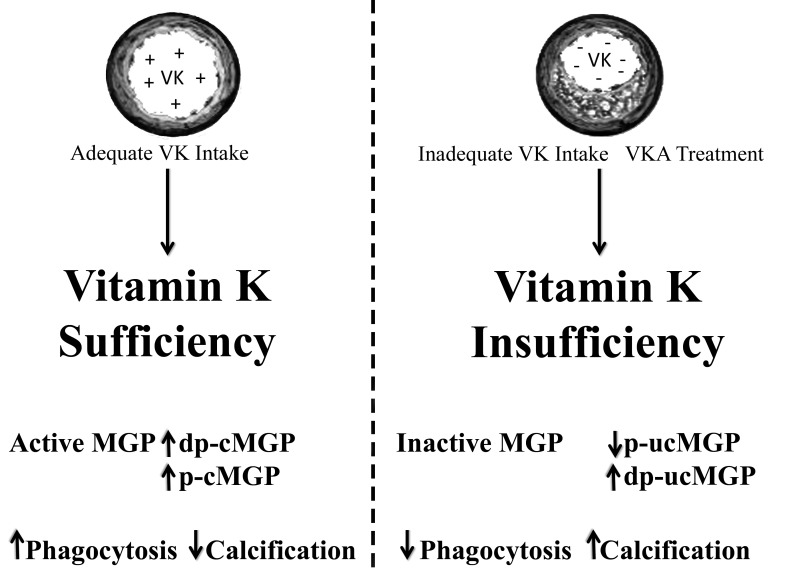
Vitamin K, a fat-soluble micronutrient, is found naturally in two forms to include phylloquinone (K1) and menaquinone (K2) (Gropper, Smith, & Carr, 2018). Said vitamin is widely recognized for its role in the synthesis of γ-carboxyglutamic acid (GLA); a residue necessary for blood clotting (Gropper et al., 2018). However, a lesser known function of vitamin K, specifically K2, is its role in directing calcium (Ca) deposition once absorbed (Beulens, Booth, Van Dan Heuvel, Stoecklin, Baka, & Vermeer, 2013). As a means of appreciating such a process, the following will explore the same.

Calcium is a mineral/electrolyte essential for many roles to include blood clotting, skeletal muscle contraction, membrane stabilization, membrane permeability, ion channel regulation, modification of binding proteins, and the mineralization of bone (Gropper et al., 2018). Although vitamin D3 is responsible for facilitating absorption of Ca from the intestinal tract, it is vitamin K2 that directs Ca deposition once transported into the bloodstream (Beulens et al., 2013; Tufts 2011). Furthermore, and most relevantly, K2 is associated with decreased deposition of Ca along the arterial walls suggesting its influence in the prevention of cardiovascular disease (Beulens et al., 2013).

Beulens et al. (2013) noted that coronary arterial calcification is a strong predictor of cardiovascular disease (CVD), and K2 is an inhibitor of the same by way of matrix γ-carboxyglutamate protein (MGP); a substance which is an inhibitor of soft tissue calcification. Such a finding was supported by observational studies, which indicated a relationship between a high intake of K2 and reduced calcification of the coronary arteries. Beulens et al. (2013) also cited three cross-sectional studies analyzing the intake of K2 and CVD; data indicated individuals with severe aortic calcifications had low K2 consumption compared to participants with mild to moderate calcifications.

Beulens et al. (2013) also noted that risk of CVD was reduced in the upper tertile (two points that divide a distribution into three components, with each containing a third of the population) of K2 intake compared to participants in the lowest tertile; such a result indicated an inverse relationship between K2 intake and CVD risk. Furthermore, MGP (mentioned in the previous section) was found in soft tissue, cartilage, dentine, bone, blood vessels, and has been associated with the mobilization and matrix of bone (Beulens et al., 2013). Not only was MGP associated with inhibition of soft tissue calcification, said protein facilitated normal bone growth and development (Beulens et al., 2013).

K2 can be found primarily in animal products such as liver meat, eggs, and fermented foods to include cheeses and Japanese dishes such as natto (soybean product) (Sato, Inaba, Yamashita, 2020). Interestingly, gut bacteria also produce a myriad of K2, though the degree of production remains under debate (Sato et al., 2020). Currently, the recommended daily intake (RDI) of vitamin K homologs (i.e., various types), is 120 mcg. Said RDI is based on maintenance of normal blood coagulation. However, Sato et al. (2020) suggested that higher doses of vitamin K are likely to be required if one’s goal is to improve bone and vascular health. Sato et al. (2020) stated that nutritional doses of K2, specifically a form known as MK-7, between 90-120 mcg/day (close to the general RDI of vitamin K) successfully promoted osteocalcin carboxylation; a protein/process required in bone formation and bone-strengthening.
In conclusion, Ca is an essential mineral/electrolyte that participates not only in blood clotting, but rather, a myriad of physiological events to include skeletal muscle contraction, membrane stabilization, membrane permeability, ion channel regulation, modification of binding proteins, and the mineralization of bone (Gropper et al., 2018). Vitamin K2 can assist Ca’s efficacy by minimizing its deposition along coronary arteries while helping reduce CVD risk, suggesting vitamin K2’s implementation in the human diet. The inclusion of foods such as eggs, meat, dairy, and cheese can help increase K2 levels allowing individuals to increase said micronutrient is a safe and effective way (Hartley, Clar, Ghannam, Flowers, Stranges, & Rees, 2015). Ultimately, such steps can serve as another means to minimize CVD risk while improving individuals’ overall health, performance, and longevity.
References
Beulens, J. W. L., Booth, S. L., Van Dan Heuvel, E. G. H. M., Stoecklin, E., Baka, A., & Vermeer, C. (2013). The role of menaquinones (vitamin K2) in human health. British Journal of Nutrition, 110(8), 1357-1368.
Gropper, S. S., Smith, J. L., & Carr, T. P. (2018). Advanced nutrition and human metabolism (7thed.). Boston, MA: Cengage Learning.
Hartley, L., Clar, C., Ghannam, O.,Flowers, N., Stranges, S., & Rees, K. (2015). Vitamin K for the primary prevention of cardiovascular disease (Review). Cochrane Database of Systematic Reviews, 9, 1-26.
Sato, T., Inaba, N., Yamashita, T. (2020). MK-7 and its effects on bone quality and strength. Nutrients, 12(14), 1-9.
Tufts, G. (2011). New treatment approach for osteopenia. Journal of Midwifery & Women’s Health, 56(1), 61.
-Michael McIsaac
